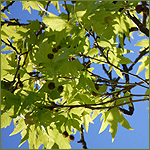The re-introduction of wolves in a US National Park in the mid-1990s is not helping quaking aspens (Populus tremuloides) to become re-established, as many researchers hoped.
 In a study published in the journal Ecology showed that the population of wolves in Yellowstone Park was not deterring elks from eating young trees and saplings.
In a study published in the journal Ecology showed that the population of wolves in Yellowstone Park was not deterring elks from eating young trees and saplings.
It was assumed that the presence of wolves would create a “landscape of fear”, resulting in no-go areas for elks.
Researchers writing in the Ecological Society of America’s (ESA) journal said that the aspens were not regenerating well in the park as a result of the elk eating the young trees.
However, they added that the conventional wisdom suggested that as the wolves were predators of the elk, it was thought that the elk would eventually learn to avoid high-risk areas in which the wolves were found.
This would then allow plants in those areas – such as aspen – to grow big enough without being eaten and killed by the elk. And in the long-term, the thinking went, the habitat would be restored.
In this latest study, lead author Matthew Kauffman – a US Geological Survey scientist – suggested the findings showed that claims of an ecosystem-wide recovery of aspen were premature.
“This study not only confirms that elk are responsible for the decline of aspen in Yellowstone beginning in the 1890s, but also that none of the aspen groves studied after wolf restoration appear to be regenerating, even in areas risky to elk,” Dr Kauffman explained.
Because the “landscape of fear” idea did not appear to be benefiting aspen, the team concluded that if the Northern Range elk population did not continue to decline (their numbers are 40% of what they were before wolves), many of Yellowstone’s aspen stands were unlikely to recover.
“A landscape-level aspen recovery is likely only to occur if wolves, in combination with other predators and climate factors, further reduce the elk population,” observed Dr Kauffman.
The paper, Are wolves saving Yellowstone’s aspen? A landscape-level test of a behaviorally mediated trophic cascade, has been published online in Ecology. The authors of the paper are: Matthew Kauffman (USGS), Jedediah Brodie (University of Montana) and Erik Jules (Humboldt State University).
Source: ESA press release
Date: 01/09/2010
Filed under: animals, biodiversity, conservation, research | Tagged: aspen, ecological society of america, ecology, ecosystem, elk, environment, esa, habitat, landscape of fear, national park, poplar tremuloide, predation, quaking aspen, research, science, trees, US, us geological survey, wolf re-introduction, wolves, yellowstone, yellowstone park |






Leave a comment